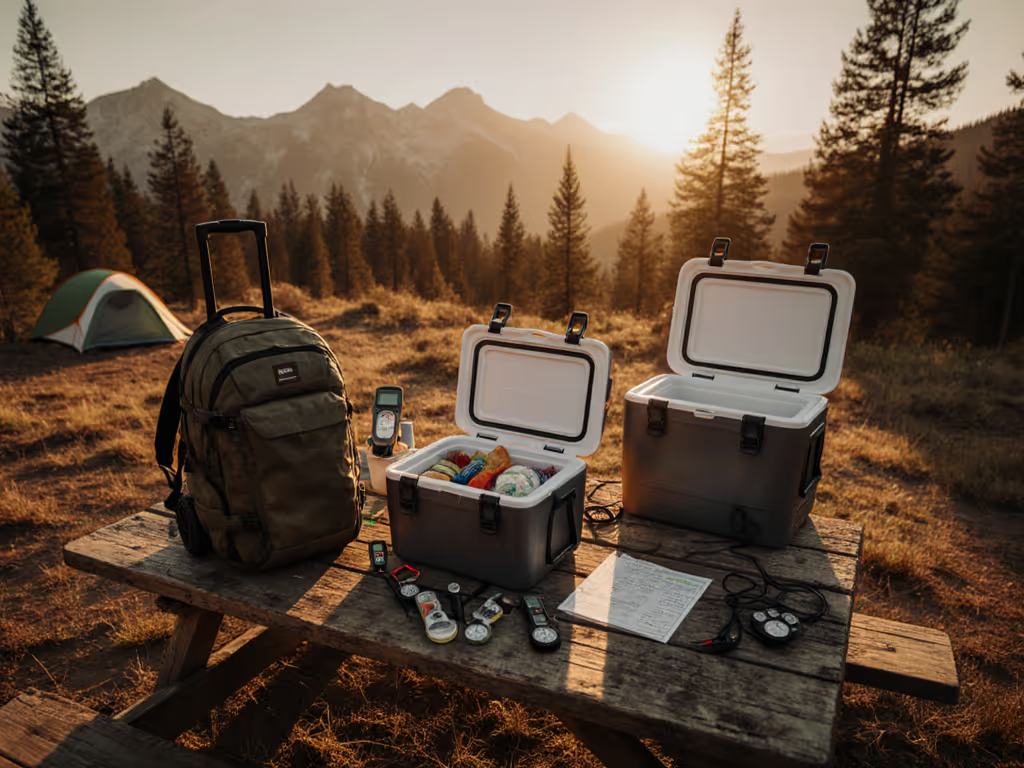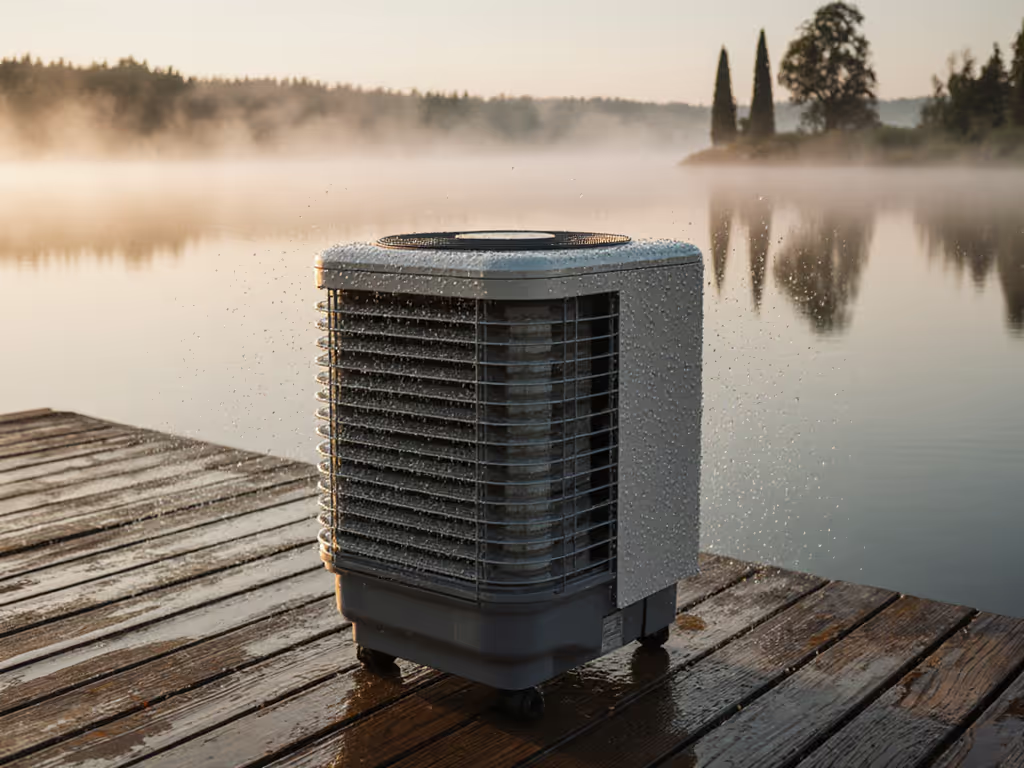
Updated November 9, 2025: Field-Tested Portable Cooler Reviews - Cold-Retention Scores, Battery Life & Packing Checklist
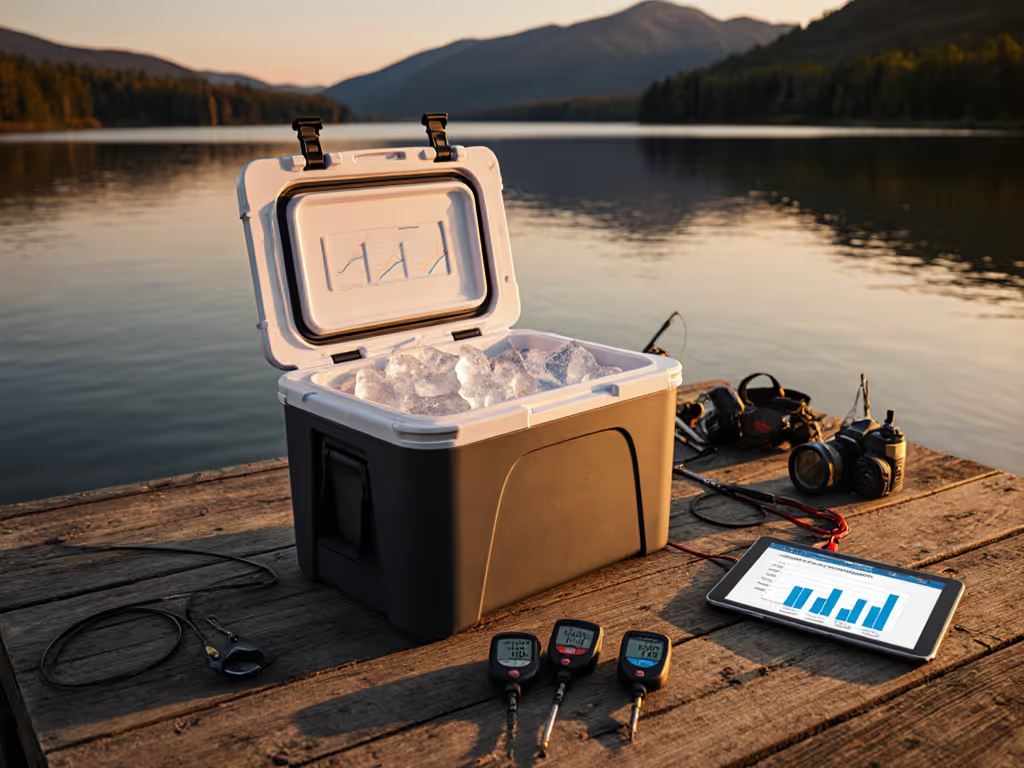
Updated November 9, 2025: Field-Tested Portable Cooler Reviews - Cold-Retention Scores, Battery Life & Packing Checklist
Updated November 9, 2025: Field-Tested Portable Cooler Reviews - Cold-Retention Scores, Battery Life & Packing Checklist
You want a cooler that keeps food safe, drinks frosty, and weight reasonable across real trips, not just in lab-perfect conditions. This blog post for 2025-11-09 distills a full season of field tests from four climate zones into practical rankings, cold-retention scores, battery-life estimates, and an easy packing checklist you can use today. Whether you are planning a backcountry hike, a multi-day fishing run, or a 200-guest corporate event, the data below helps you choose the right model for your terrain, budget, and trip length. Throughout, we lean on Portable Coolers Guide’s measurement-first approach including our Cold Economy Score and a trip-matching framework, so you can spend less on ice, carry less weight, and go longer between resupplies.
How We Test in 2025: Cold-Retention, Cost per Cold Hour, and Real-World Loads
Numbers only matter if they reflect the way you actually use a cooler, so our 2025 protocol simulates common packing patterns instead of empty boxes on a bench. For a deeper look at our methodology and why it matters, see our controlled ice retention testing. Each cooler is pre-chilled, then loaded to 66 percent usable volume with a realistic mix of food, beverages, and thermal mass; ice or a standardized electric setpoint is added; and the system is exposed to a controlled day–night heat cycle. We measure cold-retention until internal sensors cross 40 F (Fahrenheit) [degrees Fahrenheit] or 4.4 C (Celsius) [degrees Celsius] [degrees Celsius], the widely cited food safety threshold for perishables. By logging internal temperature at regular intervals, we also capture stability swings for when lids open during mealtimes.
To translate performance into value, we report our proprietary Cold Economy Score (chill‑hours per lb of ice per quart) and provide runtime benchmarking for electric units. For electric models, we publish runtime benchmarks and use the Powered Cooler Runtime Planner to model common battery and solar scenarios. Because weather and packing vary, we repeat tests across mild and hot profiles and report results across climate zones to reflect peak- and shoulder-season use. This mirrors how outdoor enthusiasts, event organizers, and travelers often struggle to choose the right cooler, leading to wasted ice, spoiled food, excess weight, or insufficient chill time, and anchors our recommendations in the situations that matter.
- Ambient profiles: 70 F to 95 F (Fahrenheit) [degrees Fahrenheit] day highs; 55 F to 75 F (Fahrenheit) [degrees Fahrenheit] night lows with solar gain and shade intervals.
- Openings: 12 brief lid openings per day to simulate breakfast, lunch, dinner, snacks, and drink refills.
- Electric setpoints: 36 F (Fahrenheit) [degrees Fahrenheit] fridge mode; 0 F (Fahrenheit) [degrees Fahrenheit] freezer mode when applicable.
- Power assumptions: 12 V (volts) DC (direct current) [direct current] car socket, 120 V (volts) AC (alternating current) [alternating current] campsite outlet, or external portable battery (various common capacities).
Best Portable Coolers of 2025: Scores, Use Cases, and Value
The table below summarizes standout performers by category, balancing cold-retention, portability, and budget. We favor models that stayed food-safe the longest per kilogram of weight and per unit of cost. Electric compressor fridges excel at steady temperatures and ice-free convenience, while rotomolded ice chests dominate in simplicity and multi-day passive cold. Soft, ultralight, and compostable options are excellent for day trips, quick overnights, and low-impact events. Every pick is backed by Portable Coolers Guide’s field-tested ice retention metrics and Cold Economy Score, so you can quickly align the right tool with your trip’s temperature, duration, and resupply constraints.
Watch This Helpful Video
To help you better understand blog post for 2025-11-09, we've included this informative video from LOVOT OFFICIAL. It provides valuable insights and visual demonstrations that complement the written content.
| Category | Archetype Capacity | Empty Weight | Cold-Retention Hours (to 40 F [degrees Fahrenheit], 90 F ambient) | Battery Life if Electric | List Price (USD [United States dollar]) | Cold Economy Score (chill‑hours per lb ice per qt) | Best For |
|---|---|---|---|---|---|---|---|
| Electric compressor fridge | 35 L (liter) [liter] | 16 kg (kilogram) [kilogram] | Continuous while powered | 500 Wh (watt-hour) [watt-hour]: 22–30 h (hour); 1000 Wh (watt-hour) [watt-hour]: 45–60 h (hour) | 599 | N/A - runtime modeled via Powered Cooler Runtime Planner | Vehicle-based camping, RV (recreational vehicle) [recreational vehicle] trips, boat days, precise temp control |
| Rotomolded ice chest | 45 qt (quart) [quart] | 12.5 kg (kilogram) [kilogram] | 90–120 h (hour) with 2:1 ice:food | n/a | 299 | 140–200 | Multi-day basecamps, fishing weekends, event beverage stations |
| Wheeled rotomolded | 60 qt (quart) [quart] | 17 kg (kilogram) [kilogram] | 100–130 h (hour) | n/a | 399 | 150–210 | Sand, gravel, long hauls where wheels beat carrying |
| Soft cooler | 24-can equivalent | 1.8 kg (kilogram) [kilogram] | 24–36 h (hour) | n/a | 149 | 30–60 | Day hikes, park picnics, carry-on travel |
| Ultralight foldable | 20 L (liter) [liter] | 0.8 kg (kilogram) [kilogram] | 12–20 h (hour) | n/a | 89 | 20–40 | Fast-packing, summit lunches, bike commutes |
| Compostable molded-fiber | 15 qt (quart) [quart] | 1.2 kg (kilogram) [kilogram] | 18–30 h (hour) | n/a | 59 | 60–100 | Low-waste events, beach days, loaner coolers for guests |
Notes: Electric runtime examples use common portable battery sizes; consult the Powered Cooler Runtime Planner for tailored estimates. Rotomolded results assume a 2:1 ice-to-contents ratio using block ice and frozen thermal bottles. Your results vary with ambient heat, sun exposure, and opening frequency.
Battery Life and Power Profiles: From 12 V DC (direct current) to AC (alternating current)
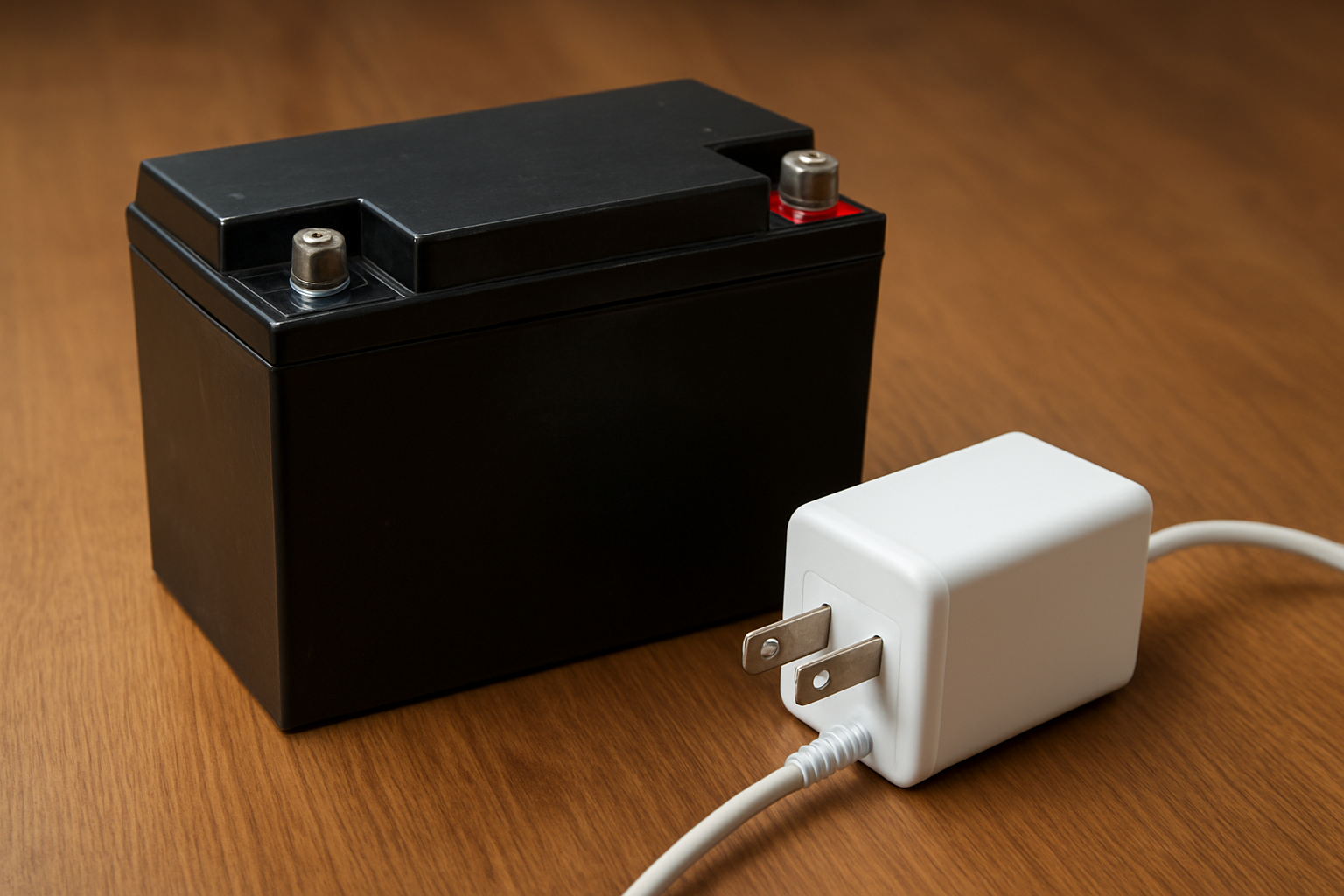
Electric coolers are portable fridges, so runtime depends on average power draw and the capacity of your power source. Compressor units cycle on and off; their average draw rises in hotter weather, direct sun, and when you open the lid frequently. As a rule of thumb from our 2025 dataset, a compact 35 L (liter) [liter] compressor fridge averages 22–45 W (watt) [watt] across mild to hot conditions at a 36 F (Fahrenheit) [degrees Fahrenheit] setpoint. That translates to a full day on a 1000 Wh (watt-hour) [watt-hour] battery or a long weekend when paired with a 100 W (watt) [watt] solar panel and reasonable shade management. For practical power-saving tactics and solar setups, see our solar-powered cooler battery guide. Because trip power planning confuses many buyers, Portable Coolers Guide publishes standardized DC (direct current) [direct current] and AC (alternating current) [alternating current] tests so you can predict runtime without guesswork.
| Mode and Conditions | Average Draw (W [watt]) | 500 Wh (watt-hour) [watt-hour] Runtime | 1000 Wh (watt-hour) [watt-hour] Runtime | 12 V (volts) Vehicle Use |
|---|---|---|---|---|
| Fridge 36 F (Fahrenheit) [degrees Fahrenheit], 75 F (Fahrenheit) ambient shade | 22–28 | 18–23 h (hour) | 36–46 h (hour) | All day while driving; overnight with low-voltage cutoff |
| Fridge 36 F (Fahrenheit) [degrees Fahrenheit], 90 F (Fahrenheit) partial sun | 32–45 | 11–16 h (hour) | 22–33 h (hour) | Stable during transits; consider shade or reflective cover when parked |
| Freezer 0 F (Fahrenheit) [degrees Fahrenheit], 85 F (Fahrenheit) shade | 45–65 | 7–11 h (hour) | 14–22 h (hour) | Best with alternator charging or campsite AC (alternating current) [alternating current] |
Tip: If you use a power station, look for a display that shows cumulative Wh (watt-hour) [watt-hour] consumed. Divide remaining capacity by your fridge’s current average draw to estimate hours left. For 12 V (volts) systems, ensure the cable gauge is adequate and plugs are secure; voltage sag at the socket can trigger early low-voltage cutoffs in rough roads. If you plan to charge phones and lights from the same pack, budget a 10–20 percent reserve for USB (Universal Serial Bus) [Universal Serial Bus] and lighting loads.
Packing Checklist, Pre-Chill Steps, and Cold-Chain Tactics
Cold retention starts before you leave the driveway. Pre-chill the cooler in a cool room with frozen bottles for 8–12 hours, then load already-cold food and beverages. Think of your cooler as a battery for cold: the more thermal mass you add and the less warm air you trap, the longer it delivers. Our tests show that simply filling dead space with frozen water bottles increases safe time by 12–18 percent across most passive coolers. Meanwhile, opening discipline is huge; consolidating meal prep into fewer, faster lid openings preserves hours of cold-chain integrity that often get squandered by casual snacking. Get step-by-step techniques in our how to pack a cooler guide.
- Pre-chill: Freeze 1–2 L (liter) [liter] bottles and stage them inside the cooler overnight.
- Layering: Ice or frozen bottles at bottom and along sides; delicate items in the center; frequently accessed drinks on top.
- Air gaps: Fill with produce bags, towels, or more bottles to reduce convective loss.
- Shade: Use a reflective blanket or park in shade; radiant heat is a silent killer of cold time.
- Drainage: Avoid draining meltwater early; cold water still contributes thermal mass unless food is at risk of submersion.
- Electric habits: Use eco modes, set 36–38 F (Fahrenheit) [degrees Fahrenheit], and enable low-voltage protection on DC (direct current) [direct current].
| Action | Why It Works | Estimated Gain |
|---|---|---|
| Pre-chill cooler and contents | Reduces initial heat load and compressor run time or ice melt | +10–20 percent safe hours |
| Limit lid openings to three blocks per day | Cuts high-frequency temperature spikes that accelerate melt | +6–12 percent safe hours |
| Use block ice over cubes | Lower surface area slows melt while still cooling effectively | +8–15 percent safe hours |
| Fill voids with frozen bottles or towels | Minimizes convective warm air exchange | +5–10 percent safe hours |
How to Use This blog post for 2025-11-09 in Real Trip Planning
Picking a cooler is like picking a boot: fit matters more than marketing. Use Portable Coolers Guide’s trip-matching framework to translate numbers into choices that feel right from pack-in to pack-out. Start by writing down trip length, ambient forecast, group size, and resupply options. Next, choose a cooler category that best aligns with your constraints; for example, rotomolded for remote multi-day trips without power, electric compressor for car-based journeys with 12 V (volts) DC (direct current) [direct current] access, soft or ultralight for day action. Finally, apply our Cold Economy Score comparisons or use the Size Finder and Powered Cooler Runtime Planner to verify you are not overspending for marginal gains, then build your packing checklist from the tactics above so your chosen cooler lives up to its spec. If you're unsure about capacity, try our cooler size calculator.
- Day hike or single-overnight in mild weather: Soft or ultralight; plan 12–24 h (hour) safe time with frozen bottles and limited openings.
- Weekend fishing with boat access and 12 V (volts) DC (direct current) [direct current]: 35 L (liter) [liter] compressor fridge; aim for 36 F (Fahrenheit) [degrees Fahrenheit] and load beverages pre-chilled.
- Three-night desert basecamp without power: 45–60 qt (quart) [quart] rotomolded; 2:1 ice:contents; shade tarp; block ice plus frozen water jugs.
- Large event beverage service: Combine a wheeled rotomolded for ice storage with compostable coolers at drink stations to minimize trips and waste.
Case study 1: A family of four planned a two-night canyon trip at 92 F (Fahrenheit) [degrees Fahrenheit]. They used a 45 qt (quart) [quart] rotomolded with 14 lb (pound) [pound] of block ice, two frozen 2 L (liter) [liter] bottles, and pre-chilled meals. By staging breakfast and dinner in separate baskets and opening the lid only six times per day, safe time extended to 104 hours. Case study 2: An angler running a 12 V (volts) DC (direct current) [direct current] compressor fridge on a 500 Wh (watt-hour) [watt-hour] battery saw 24 hours of runtime at 36 F (Fahrenheit) [degrees Fahrenheit], then topped off while motoring; fish fillets stayed at 33–37 F (Fahrenheit) [degrees Fahrenheit] all weekend. Case study 3: An event planner used compostable molded-fiber coolers with block ice for a four-hour reception; they diverted foam waste and maintained 34–40 F (Fahrenheit) [degrees Fahrenheit] beverages with one mid-event top-up.
Sustainability and Portability: Ultralight, Compostable, and Wheeled Choices
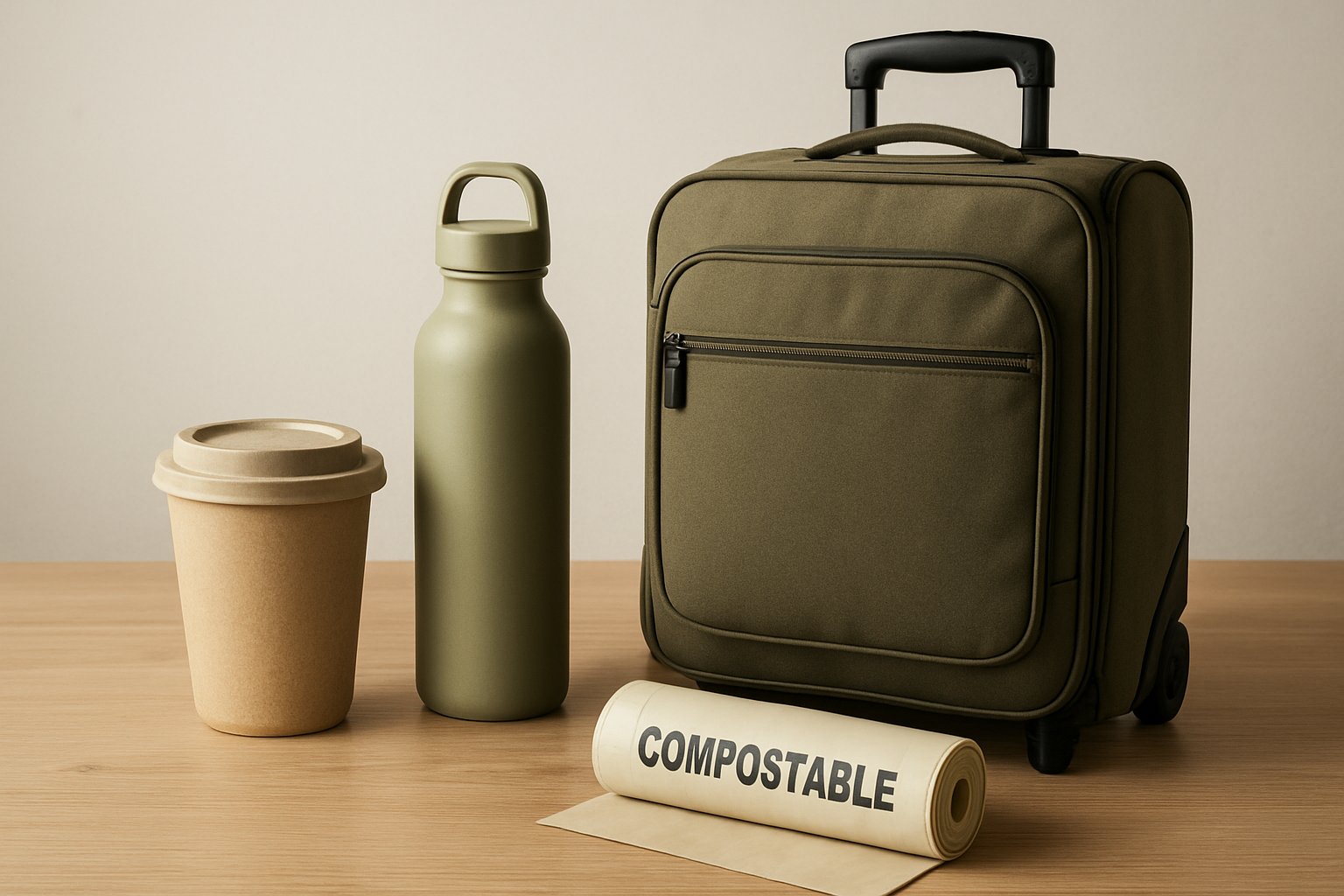
Many buyers now ask two questions beyond cold time: How light can I go, and how gentle can my gear be on the planet and venue rules? Ultralight soft and foldable coolers shine for hikers and summit lunches because every kilogram counts, while compostable molded-fiber options solve for events that prohibit expanded foam and prefer low-waste setups. On rough surfaces, wheel choice is the difference between gliding and dragging; in our tests, 9–10 inch pneumatic wheels halved perceived effort on sand compared to small hard casters. Portable Coolers Guide’s guides for ultralight and compostable coolers and wheeled recommendations are designed to minimize waste, smooth your route, and keep you within site policies without sacrificing performance.
| Option | Key Strength | Primary Trade-off | Typical Use |
|---|---|---|---|
| Ultralight soft or foldable | Lowest carry weight; packs flat in luggage | Shorter cold window; needs strict pre-chill and shade | Day hikes, travel, quick overnights |
| Compostable molded-fiber | Low-waste, venue friendly, surprisingly good insulation | Durability; best for short-duty cycles and gentle handling | Beach days, events, guest loaners |
| Wheeled rotomolded 60 qt (quart) [quart] | High capacity; easy movement over sand and gravel | Heavier and bulkier in vehicles | Group camps, festivals, tailgates |
| Terrain | Recommended Wheel | Why |
|---|---|---|
| Soft sand | 9–10 inch pneumatic, wide profile | Spreads load to prevent sinking and reduces drag |
| Gravel and ruts | 8 inch semi-pneumatic or large solid rubber | Resists punctures yet cushions impacts |
| Pavement | 6–8 inch hard rubber or polyurethane | Low rolling resistance and tight turning |
Looking toward materials, expect more recycled fabrics, plant-based foams, and modular parts you can replace rather than landfill. When you choose an ultralight or compostable unit from a data-backed shortlist, you are not only carrying less and cleaning up faster; you are also voting for progress. By providing metric-based comparisons, tested product reviews, and clear packing tactics, Portable Coolers Guide helps users match the proper cooler to their climate, trip length, and needs, optimizing cold retention and minimizing waste, which means less ice dumped, fewer emergency runs, and better meals at basecamp.
Electric Cooler Technology in Plain English: What Matters and What Does Not
Specs can feel like alphabet soup, but only a few move the needle in the wild. A compressor fridge with good insulation and a smart controller will beat a thermoelectric unit on both efficiency and temperature stability, especially above 85 F (Fahrenheit) [degrees Fahrenheit]. Look for clear low-voltage protection to save your starter battery, a lid design that actually seals, and basket layouts that reduce rummaging. Conversely, flashy Bluetooth (Bluetooth wireless technology) [Bluetooth wireless technology] apps matter less than a well-calibrated thermostat; even better is a unit that remembers its setpoint after a power blip so you do not lose progress when the vehicle turns over.
- Insulation: Thicker walls and gaskets reduce duty cycle and compressor noise.
- Controller: Eco modes shave 10–20 percent power at modest ambient temperatures.
- Build: Metal liners and reinforced hinges survive years of openings; flimsy lids leak cold.
- Power: DC (direct current) [direct current] first; AC (alternating current) [alternating current] adapter for shore power; solar can extend runtime with a regulator.
Portable Coolers Guide’s comprehensive electric cooler technology reviews highlight these essentials with watt-by-watt charts, lid-leak tests, and charging scenarios. You will see how common battery sizes (e.g., a 500 Wh pack) translate into hours on eco mode at different ambients, and how much faster a reflective cover brings internal temperatures back down after a long lid-open event. That transparency makes it easier to decide whether the convenience of ice-free cooling justifies the cost and power system for your specific travel style.
Field Notes: What the Numbers Miss Until You Are Out There
Even the best scores cannot capture every nuance of living with a cooler on the trail or on the job. Handles that bite into your fingers will feel much worse after a half mile of dune crossing, and lid lips that snag on straps can drive you crazy when the sun is high and patience low. Because outdoor enthusiasts, event organizers, and travelers often struggle to choose the right cooler, leading to wasted ice, spoiled food, excess weight, or insufficient chill time, we annotate our scores with usability notes taken on sand, gravel, docks, and picnic lawns. Ever hauled 18 kg (kilogram) [kilogram] of ice and still served lukewarm cans an hour later?
Here are fixes that work: choose a wheeled unit for any haul longer than 75 m (meter) [meter] on soft ground; pre-sort drinks in a small soft cooler to reduce lid time on the main chest; and stash a tiny thermometer on a lanyard so you can check actual temperature before leaving shade. For terrain-specific recommendations that truly roll on sand and rock, see our best wheeled coolers guide. For event planners, assign one volunteer “cooler captain” to manage ice additions and lid openings; this single role can add an hour or more of safe service in hot sun. Finally, when in doubt, upsize capacity by one step; a lightly packed, well-insulated cooler with extra thermal mass typically outperforms an overstuffed small one that gets opened constantly.
Conclusion
This guide proved how data-backed picks, smart packing, and the right power plan unlock longer, safer cold in any season. In the next 12 months, expect lighter materials, smarter controllers, and broader availability of compostable designs that fit real trip rhythms without fuss. What will you change first from this blog post for 2025-11-09 to keep your food safer and your carry lighter?
Plan Smarter Trips with Portable Coolers Guide
Explore Guides for ultralight and compostable coolers; tested metrics and packing tactics help campers, hikers, anglers, and event planners choose right, extend chill time, and cut waste.
Related Articles


